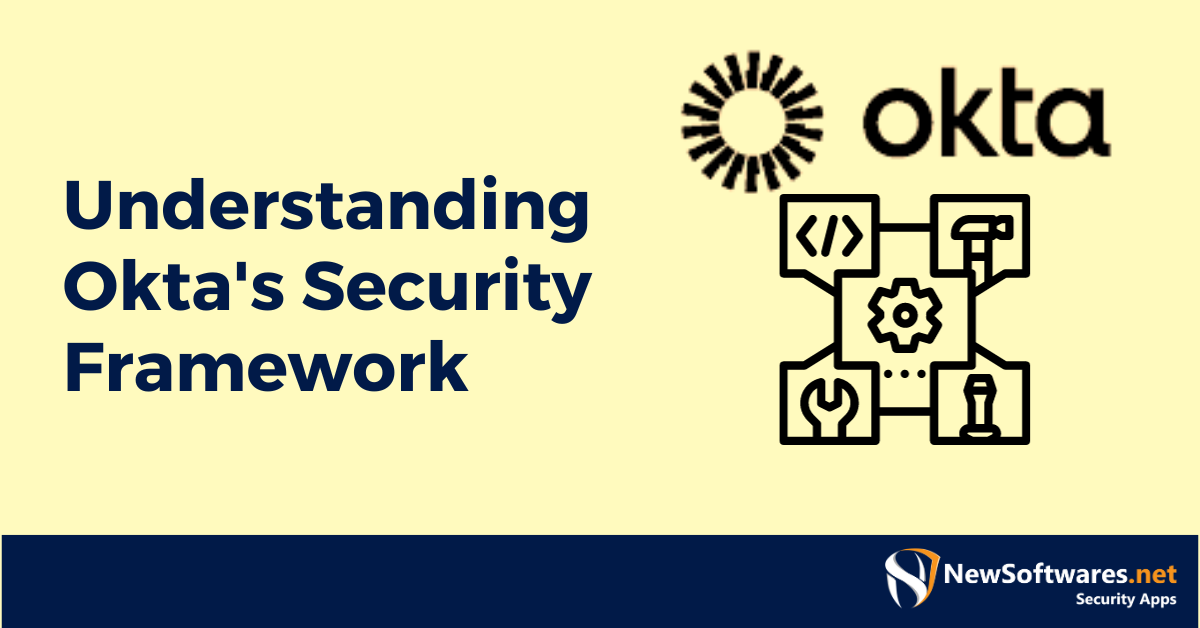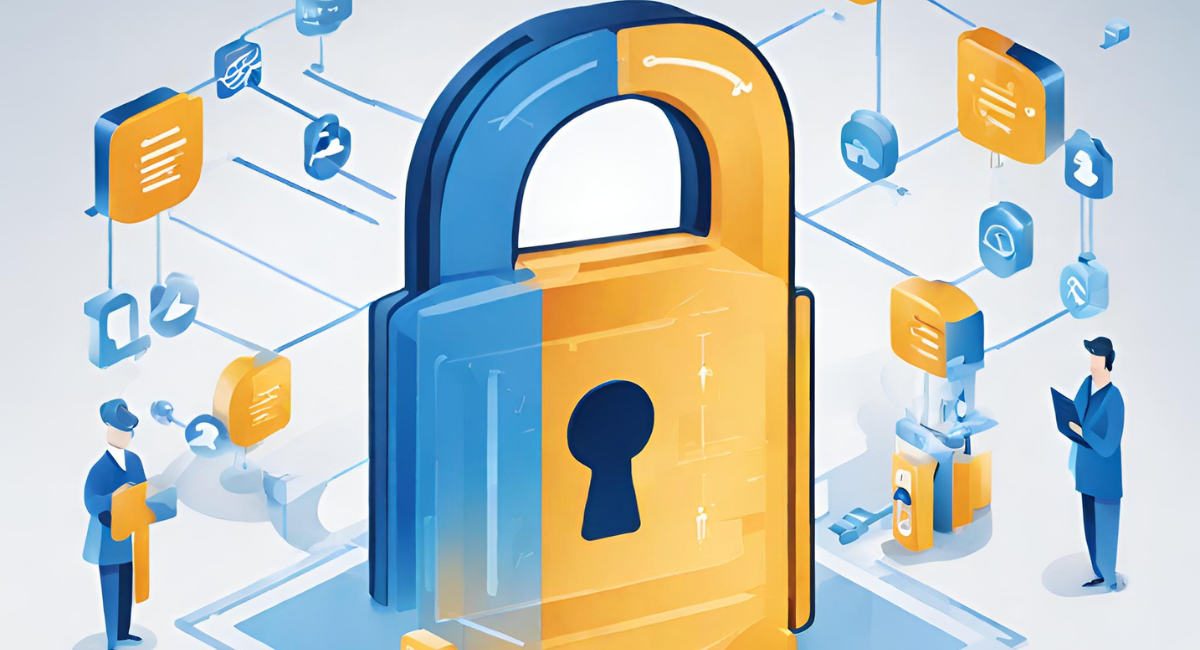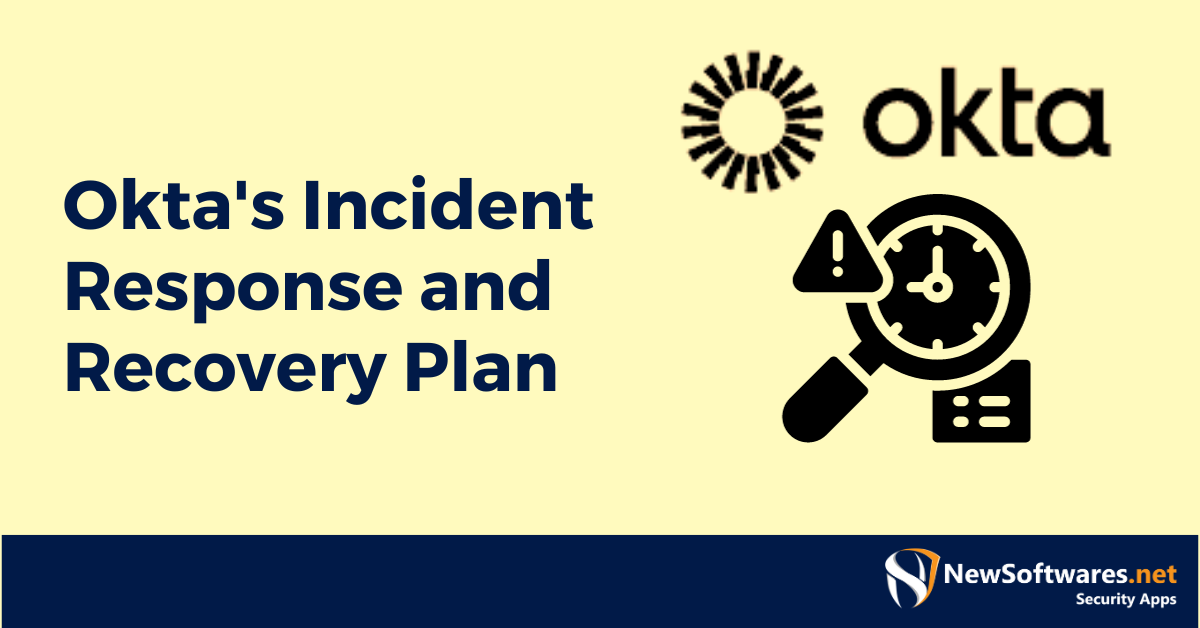Okta secures user data using a combination of encryption, strict access controls, and continuous monitoring.
In today’s digital landscape, data security is of utmost importance. With increasing data breaches and cyber threats, organizations must ensure their users’ data is securely stored and protected. One such company that takes data security seriously is Okta. We will explore how Okta secures user data in their cloud, understanding their security framework, data encryption practices, compliance with global security standards, incident response and recovery plan, and the role of users in data security.
Understanding Okta’s Security Framework

Okta’s security framework is designed to provide robust protection for user data. Identity and access management (IAM) is at the core of their framework. IAM is crucial in implementing strong security measures by ensuring that only authorized individuals can access data and resources.
Identity and access management (IAM) is a wide-ranging system encompassing various processes and technologies to manage user identities, roles, and permissions. Okta’s IAM solution includes user provisioning, single sign-on (SSO), and role-based access control (RBAC). These features work together to streamline user management and enforce security policies.
Okta’s IAM system starts with user provisioning, which involves creating and managing user accounts. When a new user joins an organization, Okta’s IAM system automates the process of provisioning their account, ensuring that the user has the necessary access rights and permissions based on their role within the organization.
Once users are provisioned, Okta’s IAM system enables single sign-on (SSO), which licenses users to access many applications and systems with just one set of credentials. This enhances user convenience and recovers security by reducing the need for users to remember multiple passwords.
Furthermore, Okta’s IAM system incorporates role-based admission control (RBAC) to impose the principle of least privilege. RBAC safeguards that users are granted access only to the resources and data they need to perform their job responsibilities. Okta minimizes the risk of unauthorized access and potential data breaches by limiting access rights.
Additionally, Okta places great importance on multi-factor authentication (MFA) as an added layer of security. MFA requires users to provide additional verification, such as a fingerprint or a unique code, in addition to their username and password.
Multi-factor authentication adds an extra layer of defense by requiring users to provide multiple forms of ID. This reduces the risk of unauthorized access, even if a user’s password is compromised. Okta’s MFA solution supports various authentication factors, including biometrics, SMS codes, and hardware tokens.
Moreover, Okta’s MFA solution offers flexibility in deployment options. Organizations can implement MFA for all users or selectively enable it based on specific criteria, such as user roles or access to sensitive data. This flexibility allows organizations to strike a balance between security and user experience.
Okta’s security framework also includes continuous monitoring and threat intelligence. Okta’s security team monitors the system for suspicious activities or potential threats. They leverage threat intelligence feeds and advanced analytics to detect and respond to security events.
In conclusion, Okta’s security framework is a comprehensive and robust system that combines identity and access management, multi-factor authentication, and continuous monitoring to protect user data and ensure secure access to resources. Okta helps organizations mitigate the risks of unauthorized access and data breaches by implementing these security measures.
Okta’s Data Encryption Practices

Data encryption serves as a crucial component of Okta’s data security strategy. At-rest encryption ensures that stored data is protected from unauthorized access. Okta employs advanced encryption algorithms to encrypt data, making it virtually impossible for hackers to decipher.
In-transit encryption is equally important in securing data movement. Okta uses industry-standard protocols like SSL/TLS to encrypt data while it is being transmitted over the network. This ensures that data remains secure even if intercepted by malicious actors.
Okta’s commitment to data security goes beyond the use of encryption. They have implemented multiple layers of security events to safeguard their customers’ data. One such measure is the use of multi-factor authentication (MFA). MFA adds a layer of protection by necessitating operators to provide additional verification to their regular login credentials, such as a fingerprint scan or a one-time password.
Additionally, Okta regularly conducts security audits and assessments to identify any vulnerabilities in its systems. They work closely with third-party security experts to ensure their infrastructure is robust and resilient against potential threats. This proactive approach to security helps Okta stay ahead of emerging risks and continuously improve its data protection practices.
Okta also prioritizes the privacy of its customers’ data. They adhere to strict data protection rules, such as the General Data Protection Regulation (GDPR), to ensure that personal information is handled with the utmost care and compliance. This includes implementing measures like data anonymization and access controls to minimize the risk of unauthorized access or misuse of sensitive data.
Furthermore, Okta provides its customers with transparency and control over their data. They offer detailed privacy settings that allow users to customize their data-sharing preferences and manage their consent for data processing. This empowers individuals to make informed decisions about how their data is used and shared within the Okta ecosystem.
Okta’s dedication to data security extends to its partnerships as well. They carefully vet and select third-party vendors and service providers to ensure they meet the same high data protection and security standards. This includes conducting thorough security assessments and due diligence to verify the reliability and trustworthiness of their partners.
Okta’s data encryption practices are just one aspect of its comprehensive approach to data security. By combining advanced encryption techniques, multi-factor authentication, regular security audits, and strict privacy regulations, Okta strives to provide its customers with the highest data protection and peace of mind.
Okta’s Compliance with Global Security Standards
Okta recognizes the importance of complying with global security standards to protect data. They understand that in today’s digital landscape, where data breaches and cyber threats are becoming progressively common, it is crucial to prioritize the security of user information.
One of the key global security standards that Okta adheres to is the General Data Protection Regulation (GDPR). This regulation, implemented by the European Union, sets guidelines for collecting, storing, and processing personal data. By complying with GDPR, Okta ensures that user data is handled accountable and lawful, giving individuals greater control over their personal information.
But Okta’s commitment to global security standards doesn’t stop there. They have gone a step further by obtaining the ISO 27001 guarantee. This certification is an internationally documented standard for information security management systems. It delivers a framework for governments to establish, implement, maintain, and continually recover their information security management systems.
By obtaining the ISO 27001 certification, Okta demonstrates its dedication to maintaining a robust security infrastructure and following best practices in information security. This certification is difficult to obtain and requires rigorous assessments and audits to ensure compliance with the standard’s requirements.
Okta’s commitment to global security standards and certifications goes beyond mere compliance. They understand that security is an ongoing process and unceasingly invest in research and development to stay ahead of emerging threats. They work closely with industry experts and security governments to stay up-to-date with the newest trends and technologies in cybersecurity.
Moreover, Okta’s security team comprises highly skilled specialists who are well-versed in the latest security practices and technologies. They regularly conduct security assessments, vulnerability scans, and diffusion tests to identify and address any potential weaknesses in their systems.
Okta also maintains a strong incident response program to swiftly and efficiently respond to security incidents or breaches. They have a dedicated team trained to handle such situations, ensuring minimal user and data impact.
In conclusion, Okta’s compliance with global security standards, such as GDPR and ISO 27001, is a testament to its commitment to data privacy and protection. By adhering to these standards and obtaining certifications, Okta ensures that user data is handled securely and following best practices. Their continuous investment in security measures and dedicated security team further reinforce their commitment to providing a safe and trustworthy platform for their users.
Okta’s Incident Response and Recovery Plan

Despite the best security measures in place, organizations must be prepared for unforeseen incidents and be able to respond promptly to minimize the impact. Okta understands the importance of a robust incident response and recovery plan to protect its systems and data from potential threats.
Okta employs proactive threat detection and response mechanisms to identify and mitigate potential security breaches before they can cause harm. This involves using advanced security tools and technologies, such as intrusion detection systems and security information and event management (SIEM) solutions. These systems continuously monitor network traffic, log events, and analyze data patterns to detect suspicious activities or anomalies.
Once a potential security breach is detected, Okta’s incident response team springs into action. This team comprises highly skilled and experienced specialists trained to handle various security incidents. They follow a well-defined incident response plan that outlines the essential steps to be taken in case of a security breach.
The first step in Okta’s incident response plan is to contain the incident. This involves isolating the affected systems or networks to prevent the further spread of the attack. By containing the incident, Okta aims to limit the potential damage and minimize the impact on its operations and customers.
After containing the incident, Okta’s incident response team conducted a thorough investigation to control the nature and extent of the breach. They analyze the compromised systems, review logs, and network traffic, and gather any other relevant evidence to understand how the breach occurred and what data may have been compromised.
Based on the investigation findings, Okta takes appropriate remedial actions to mitigate the breach’s impact. This may involve patching vulnerabilities, updating security configurations, or implementing additional security controls to prevent similar incidents in the future.
In addition to incident response, Okta has well-defined disaster recovery strategies to ensure business endurance during a cyber attack or natural disaster. This includes frequent data backups, redundancy measures, and comprehensive recovery plans.
Okta’s disaster recovery plan involves regular backups of critical data and systems. These backups are stored in secure off-site locations to protect against data loss or corruption. In a cyber attack or normal disaster, Okta can quickly restore its systems and data from these backups, minimizing downtime and ensuring its services remain available to customers.
Furthermore, Okta has implemented redundancy measures to ensure the high availability of its services. This includes the use of multiple data centers located in different geographic regions. By distributing its infrastructure across multiple locations, Okta can withstand localized disruptions and continue providing uninterrupted customer services.
Okta’s comprehensive recovery plans outline the necessary steps to be taken in the event of a major incident or disaster. These plans cover various scenarios, such as data breaches, system failures, or physical damage to infrastructure. They provide clear guidelines and procedures to be followed by Okta’s employees and stakeholders to facilitate a swift and effective recovery process.
In conclusion, Okta’s incident response and recovery plan is critical to its overall security strategy. By proactively detecting and responding to potential security breaches and having well-defined disaster recovery strategies in place, Okta ensures the protection of its systems, data, and the continuity of its business operations.
User’s Role in Data Security on Okta
While Okta is significant in securing user data, users are also responsible for enhancing security. Okta provides best practices and guidelines for users to ensure their data remains safe.
One such best practice is regularly updating passwords and using strong, unique passwords for different online accounts. This helps prevent unauthorized access in case one account gets compromised.
Understanding user permissions and roles within Okta is also crucial. Users should have the appropriate level of access based on their job responsibilities, which helps prevent data breaches due to unauthorized access.
Key Takeaways
- Okta uses strong encryption both at rest and in transit.
- They have strict access controls to ensure that only authorized personnel can access user data.
- Okta undergoes regular third-party audits and certifications.
- Their infrastructure has built-in redundancy and backup to prevent data loss.
- Continuous monitoring and threat detection mechanisms are in place to detect and mitigate threats.
FAQs
Q: Is user data encrypted in Okta’s cloud?
A: Okta encrypts user data at rest and during transit.
Q: Does Okta share user data with third parties?
A: Okta has strict policies against unauthorized data sharing and ensures only authorized personnel can access it.
Q: How does Okta handle data breaches?
A: Okta has robust monitoring and threat detection systems. In a breach, they take immediate action to mitigate and inform affected parties.
Q: Is Okta compliant with data protection regulations?
A: Okta undergoes regular third-party audits and complies with various data protection regulations.
Q: Can I back up my data from Okta’s cloud?
A: Okta provides mechanisms for users to back up their data.
Conclusion
In conclusion, Okta’s commitment to data security is evident through its security framework, data encryption practices, compliance with global security standards, incident response and recovery plan, and user education. Okta creates a secure environment for its cloud-based services by implementing robust security measures and ensuring user awareness. Users can rest assured that their data is protected, allowing them to focus on their work without worrying about the safety of their information.
